Homemade Potato Bread
This post may contain affiliate links. Please read our disclosure policy.
A slice of freshly baked homemade potato bread is the best! Soft and fluffy on the inside with crust that softens once it cools down makes it perfect for kids as well.
This is our favorite homemade bread recipe that we make often. It is a dairy-free bread recipe unless leftover mashed potatoes are used (more info below).
Stays soft for several days!
Serving ideas:
- Soups and stews.
- Toast it and spread butter and jam over or make an open sandwich.
- Leftovers are delicious grilled and served with tossed salad and grilled meats and if you spread a generous amount of chive butter you will be in for a treat!
Potato bread frequently asked questions:
No. This recipe is developed and tested with regular all-purpose flour.
This is one of the bread recipes that guarantee you a soft loaf after several days. In fact, if it is stored well, it can last up to 5 days.
A slice contains about 106 calories. Please, take this number as a guide only as each slice can have a different thickness and size.
Yes, it is when it comes to the amount of nutrients it contains. It also contains more fiber and a good amount of potassium that helps lower our blood pressure.
Please do not worry about this much. It can turn out airy or thicker on the inside (but still it will be soft), darker or lighter in color, the dough can feel softer or dense,… The difference can be caused by a different moisture level, hand or machine-kneading, quality of ingredients…
In general, no matter what it looks like it will come out great.
This is a very forgiving recipe, but there are things that can an occasional bread baker find challenging or start questioning. Below, I tried to explain it all in detail.
How to make potato bread
I have included a list of things to help you make the best potato bread. These are the things I have learned over the time making this bread:
Hand-kneading vs machine-kneading
I have made this homemade bread by hand, in a Kitchen Aid mixer as well as food processor with dough attachment.
I learned that my powerful food processor needed only a few seconds to form a dough. When left longer on (unattended) it was unworkable as it would turn too soft to work with.
The stand mixer needed a longer time and more water for kneading on a low setting (2-4). Now, with the water here, it is important not to add too much as the bread dough will come together eventually, and if too much liquid is added this will result in a very soft dough… When kneading it, you will need to add more flour to the surface to keep it from sticking.
Hand kneading should take about 5-7 minutes and it always gives me the best-looking dough before proofing. It does not change how the bread tastes though.
How much water to add?
Flour, potatoes and the environment you live in all contain some moisture (some more, some less). This affects the amount of liquid (in our case water) we need to add to the dough.
Because for every person this is different, it is almost impossible to say the right quantity.
However, this potato bread recipe calls for 1/3 cup water. This is the minimum that works well. More liquid should only be added after you let the dough knead in your mixer for several minutes. If it does not come together, add a splash (a tablespoon) and mix again.
Kneading by hand or using a food processor does not seem to require any additional liquid.
Loaf size
My original potato bread recipe stated that you could form the dough into 2 small loaves instead of having 1 large. You can still do it, but I recommend baking them at a slightly lower temperature.
This homemade potato bread is an old post that has been recently updated with more detailed instructions and useful tips.
Using leftover mashed potatoes
You can use leftover mashed potatoes to make this homemade bread, but here are a few things to remember:
If your mashed potatoes are well seasoned, it’s better to reduce the quantity of salt in the recipe. If they are thin/too liquidy, you might need to reduce the quantity of liquid in the recipe.
Baking time and temperature
After taking into account readers comments I reduced the original cooking time to 400 Fahrenheit (200 Celsius).
I have a smaller oven, so I bake on the bottom rack. The crust becomes dark brown after about 20 minutes so if you prefer a paler color, reduce the temperature slightly after 20 minutes.
Every oven is different so the baking time may vary. Your bread is ready when the crust is hard to touch, it sounds hollow when you knock on it and the bottom is browned.
Extra tips:
- Storing bread: Make sure the loaf is completely cooled down before you store it in a bread tin or cover it in a clean dry kitchen towel – fabric, not the paper kind. A wet towel or humid environment can reduce its shelf life and mold can form inside (I have been making this homemade bread for years. Only once I experienced mold after being left on the kitchen counter for 4 days. The humidity levels in our house reached 70%).
- This potato bread recipe works well with instant yeast, active dry yeast as well as fresh yeast.
- The hard crust will get soft once cooled down.
A few more bread recipes you might like to try:
- Irish Soda Bread
- Focaccia
- Flatbread – again, made with mashed sweet potatoes, this flatbread is easy and our readers love it!
Homemade Potato Bread
Ingredients
- 3 cups strong bread flour , spooned & leveled, see note 1 (420 grams)
- 1 tablespoon granulated sugar
- 1½ teaspoons salt , see note 2
- 2¼ teaspoons instant yeast , see note 3 (7 grams)
- 2 cups mashed potatoes , see note 4
- 1 tablespoon olive oil , see note 5 (optional)
- ⅓ cup lukewarm water , see note 6 (70-80 milliliters)
Instructions
- For stand mixer with hook attachment: In a bowl of your stand mixer, add flour, sugar, salt and yeast. Mix well with a wooden spoon. Add mashed potatoes and turn on the mixer for a minute. Slowly, pour in water and oil. Knead for about 3-4 minutes, or until well combined.
- For hand-kneading: In a large bowl, combine flour, sugar, salt and yeast. Mix well. Add mashed potatoes. With your hands, combine everything together, until you get a crumb-like texture. Add water and oil and form into a dough. Transfer the dough onto a clean, lightly floured worktop and knead for 5-7 minutes. Spray the same bowl with some oil and place the dough back in (no need to wash it).
- For both: Cover the bowl with plastic foil and a clean kitchen towel. Transfer it to the warmest place in your house and let it rise (proof) until doubled in size, about 60 minutes (see note 7).
- When ready, transfer the dough onto a well-floured worktop and knead several times to get a smooth loaf. Shape the loaf into a long sausage.
- Place it onto a baking tray lined with baking parchment. Make several cuts with a knife on top and sprinkle with flour. Cover with a clean kitchen towel and let it rise for about 20 minutes. At the same time, turn on the oven and preheat it to 400 Fahrenheit (200 Celsius).
- Bake for 35 minutes or until the crust is hard, has a nice brown color and if you knock on the bottom of the loaf you hear a hollow sound.
- Cool down before slicing.
Notes
- Strong flour can be substituted with all-purpose (plain flour) without a problem.
- Salt – I used classic table salt. If using leftover mashed potatoes, you might need to reduce the salt as the mash is more likely already well-seasoned.
- Yeast – Active dry yeast can also be used and so can fresh yeast. Both should be activated in water (use the 1/3 cup + sugar). You will need 2¼ teaspoons of active dry yeast or with 0.7-ounce/20-grams fresh yeast.
- Potatoes – 2 cups are about 1.5-pounds (700-grams) of potatoes (uncooked). Use any you have on hand. You can also use less than 2 cups (i.e. 1.5 cups, but slightly more liquid will be needed). Always add a little at a time, like a tablespoon of water. Then mix and add more only if needed.
- If you omit olive oil, add an extra tablespoon of water.
- You may or may not need to add slightly more water to the dough. This is because the moisture in the flour, potatoes, and area you live in can vary. At first, it may look to you that the dough is dry and way more water is needed. Be careful, and wait a bit until the kitchen mixer mixes the dough for a while before you decide to add some more. The potatoes should make the dough very pliable, in fact, with 1/3 cup of water, it will be quite sticky.
- The proofing time can vary depending on how warm your house is. In general, count with 60 minutes, but it can take from 40 (extremely warm places) up to 90 minutes (cold places – especially in winter).
- Storage – this potato bread keeps well for several days (up to 5 days) when stored in a bread bag or container. Make sure to let it cool down completely before storing!
- Crust – the crust should be hard when you take the bread out from the oven but will soften when cooling down.
- No eggs, milk, or butter – this recipe does not contain any dairy products. However, you can use your leftover mashed potatoes where you might have already added some of the mentioned ingredients.
- To troubleshoot or if in doubt, please read the detailed post above this recipe card.

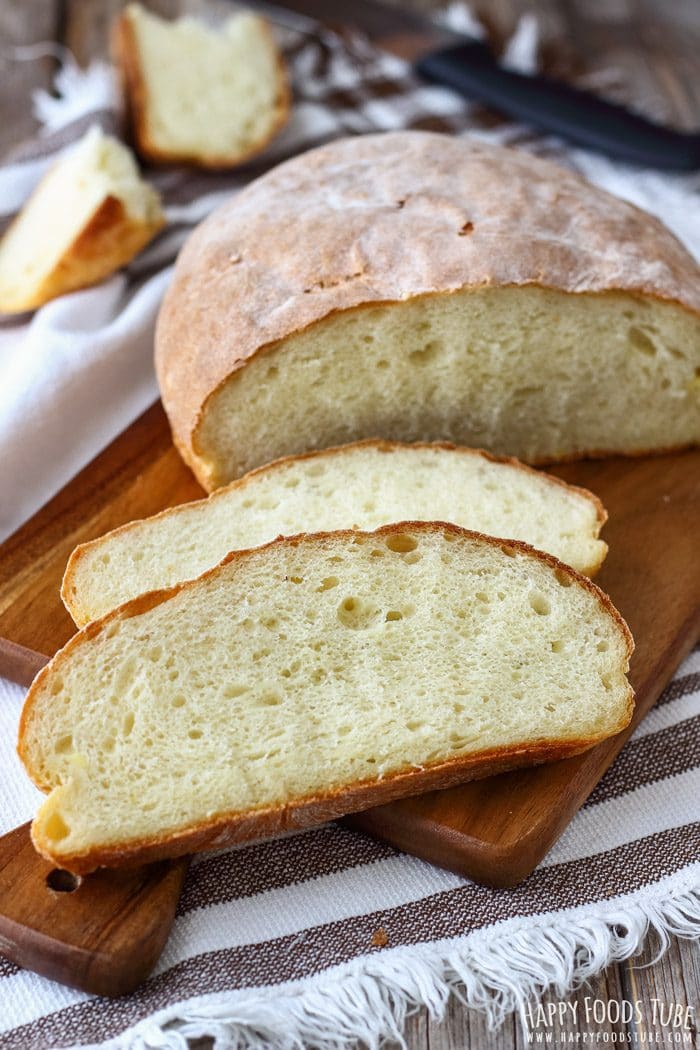
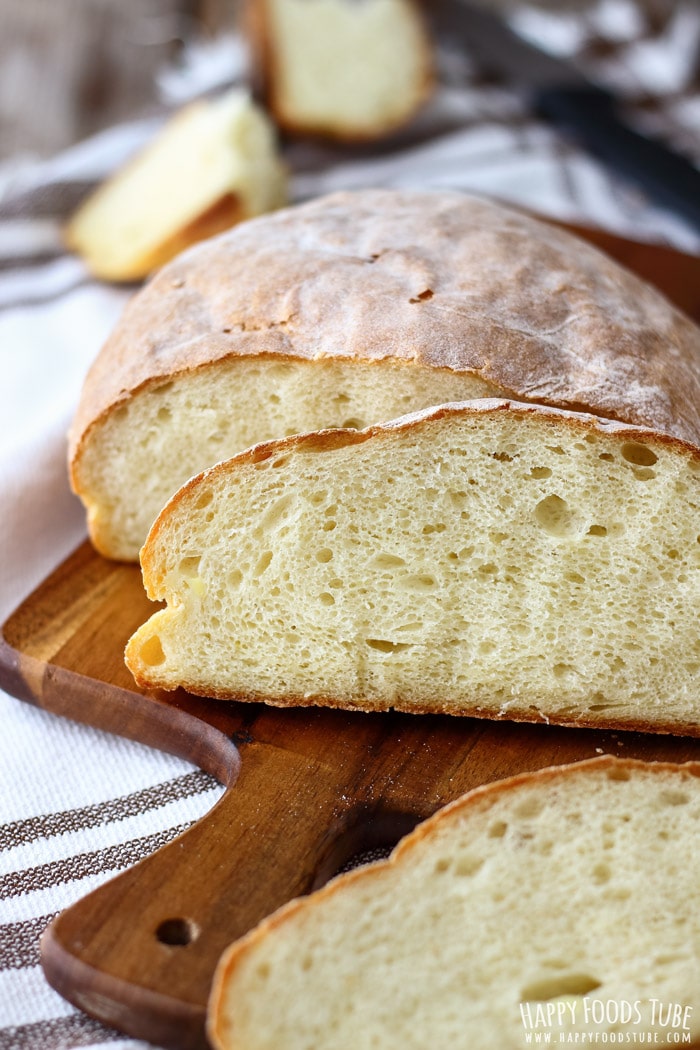
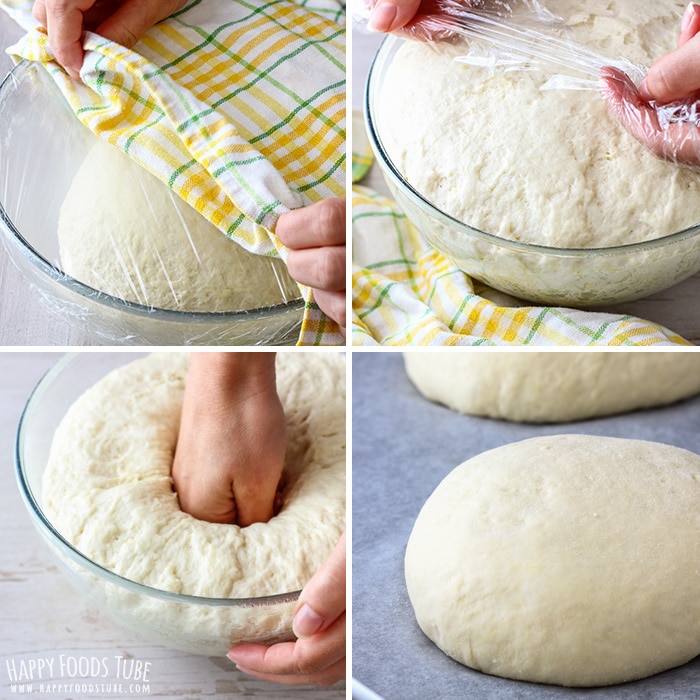
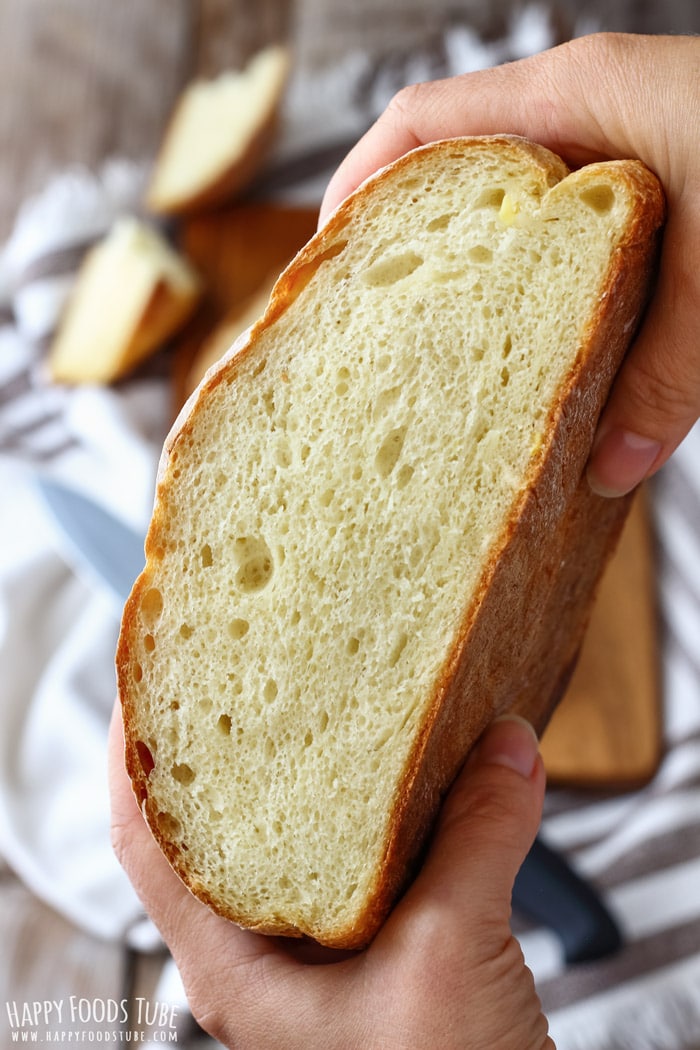
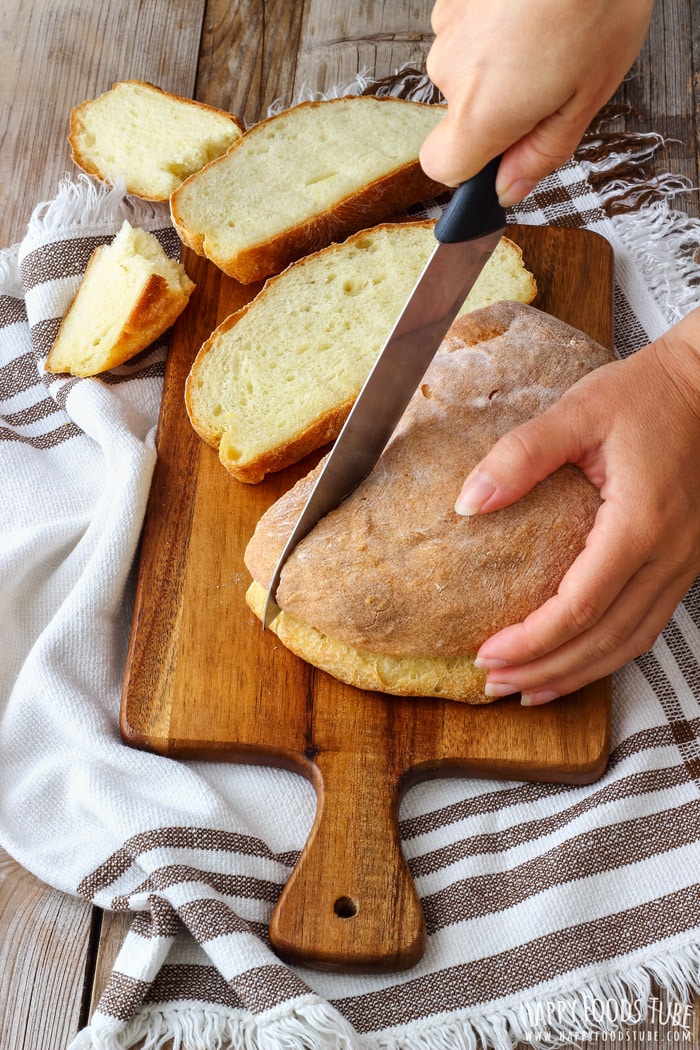
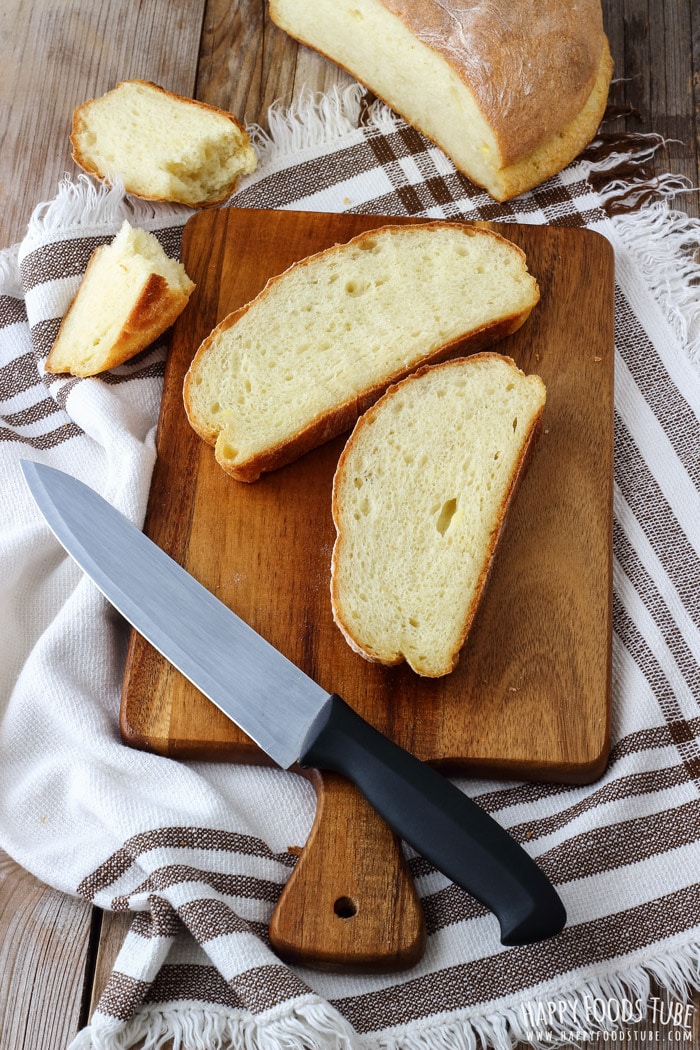
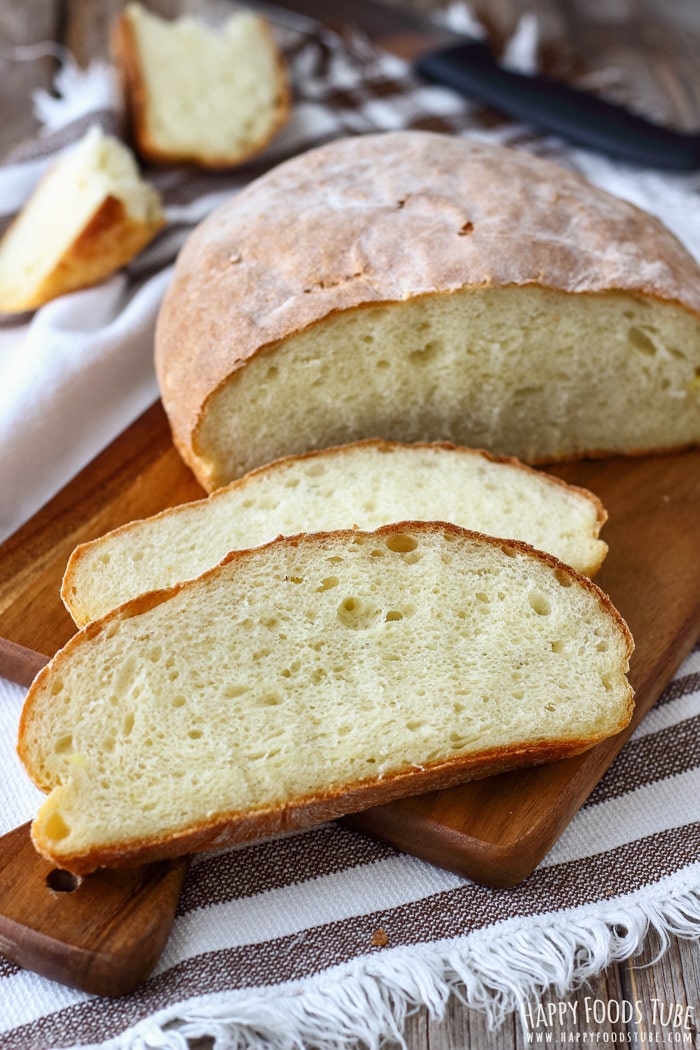
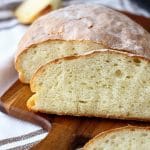
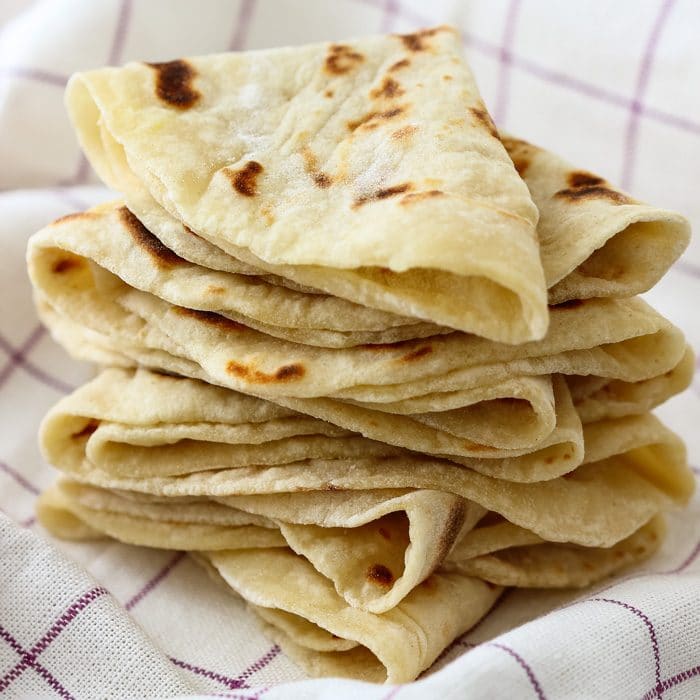
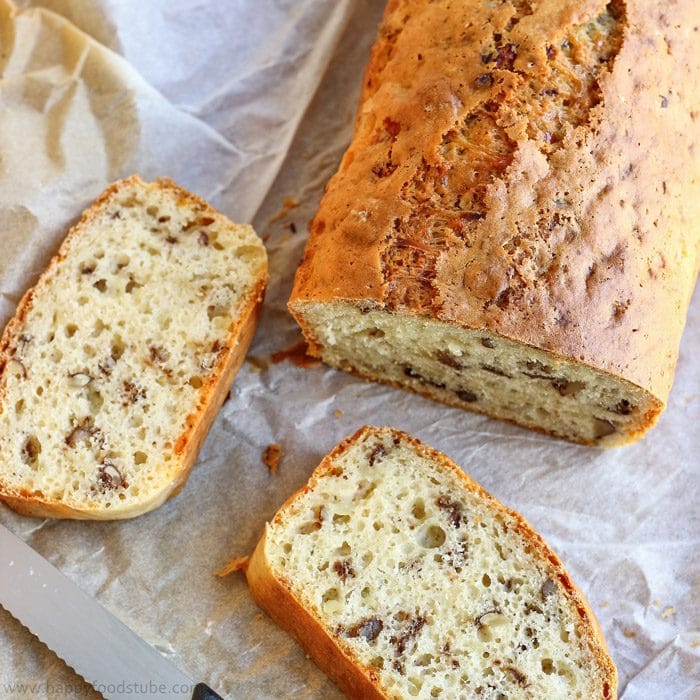
I just made this bread – followed the recipe to a tee and now it’s sitting like a big lump in a bowl. It has been over an hour and it hasn’t risen at all! What did I do wrong? I used 1 1/4 teaspoons yeast (7 grams) – could that be the problem. Also, my potatoes were cold. So disappointed….
Hi Shelly. I am afraid 7 grams would be 2 1/4 teaspoons of yeast not 1 1/4 teaspoons so that was why the bread did not rise. I will be updating this recipe soon with a clearer instructions for both European and American measurments. Hope you give it a go again!
⅓ cup Water (how many grams or ml?)
3 cups Strong Bread Flour (how many grams?)
2 cups Mashed Potatoes (about 1.7 pounds/800 grams raw potatoes)
I googled Cup measurement and the conversion results were confusing. (Google 1 cup of mashed potato in grams, it came up with 140gr, 279gr and 250gr all on a single page! And in the recipe it says 800gr raw potatoes which is differ quite significantly)
The same also for Flour, so many different conversion to metric.
I really appreciate if you could provide the international metric measurement. Thanks.
Hi Eric. Thanks for your comment. You are right. The conversions will never be the same. With potatoes, it would depend how well they would be packed in a cup for example. With flour, the measurement can vary from 120 to 150 grams, depending how you measure and that is why you can see different numbers on different websites. This is quite a forgiving recipe so the difference does not matter so much here but I will be updating this recipe so that it is clear for everyone. Hope this helps and you will come back in a week or so to check the improved recipe.
Thanks for the response.. will try it soon. Thanks for sharing this wonderful recipe!
I was not sure if the recipe required just mashed potato, or finished mash potato with milk, butter etc. I erred on the side of just mashed potato, and this required me to add about an extra 2/3 cup of water to make the dough. It turned out very well. I also baked it at 400F for 2 small round loaves, per one of the comments. It would be great with some crumbled rosemary added in to the dough for a savoury bread.
Hi Kiwi! The recipe calls for plain mashed potatoes, but I often use my leftover potato mash (with butter, milk, etc) and it always turns out well. The only difference you might notice is the consistency of the dough but it has never affected the final result. Sometimes it might need more water and this is due to the potato type, flour (some contain more moisture, other less) and also the humidity where you live. I will try to improve the recipe and add more notes for future bread makers but all in all it is a very easy recipe that always turn out great.
Hello! I would love to try this recipe! What kind of potatoes did you use?
Hi Jasmin. Any potatoes will work! I always use what I have on hand. Hope this helps.
Thank you!! I tried the recipe today, but I think I may have added too much potatoes or the the potatoes may not have been mashed that finely? My bread loaf was baked and the top part was hallow and the whole dough was on the bottom and it’s texture was similar to raw dough :(
Hi Jasmin. I am sorry to hear that. I have never had such problem. It’s quite a forgiving recipe and from my experience, the quantity of potatoes should not be the problem. I would suggest baking it for longer next time, perhaps your oven is slower or does not heat that well. Did the bottom of your loaf looked brown and was hard to touch?
Thanks for this recipe. Has become my go too one. I bake bread ever second day. Have substituted mashed butternut, sweetpotato for some of the potato at times and still fabulous. Have also used a mix of white and whole wheat… Recipe has never failed. Have shared with many friends.
Thanks so much for your feedback, Yasmin. It’s such an easy bread and so delicious. I also use sweet potatoes when I have them on hand. Happy bread making! :)
My new favorite go too recipe… Baking it at least twice a week… Cos we no longer buy bread.
I substituted a cup of butternut mash a few times and it was just as soft and tasty with a slight yellow color.
Also found that you can use the water in which u boiled potatoes to dissolve the yeast.. No waste.
Have shared it umpteen times with friends.
Love your substitution, Yasmin! Thanks for your feedback and tips – our readers will definitely find them helpful! :)
We just polished off 1/2 this bread before it had a chance to cool! Super easy to make and we used up leftover mashed potatoes from Thanksgiving which were seasoned with onion, garlic and cream cheese. Thank you so much for the recipe, will keep this.
Thanks so much for your feedback, Candace! Hope you find more recipes on our blog!
That’s so good to hear, Candace :) Thanks so much for finding time to leave the feedback and rating!
Could I make this in a bread machine?
I have never tried it, Jessica so can’t help you. If you do, please let us know how it worked for you!
It works really well in a bread machine – use the DOUGH cycle – don’t bake this in the bread machine – bake it in your oven.
At what temperature do you bake this? Sorry if I have missed it. X
Hi Claudia. It’s 220C but some readers mentioned that 200C worked better for them. I recommend keeping an eye on it when you bake it for the first time. Hope this helps.
Any suggestions for making this bread at high altitude?!?
Can you use instant potatoes?
I have not tried it myself so I can’t really say. However, I would not recommend it. Hope this helps.
What a great way to use up leftover mashed potatoes.
I don’t have bread flour. Will this recipe fail me with all purpose flour?
Monika, it won’t fail. I made it with all purpose flour as well and we liked it too! Happy baking.
This looks awesome!!! I love fool-proof breads because some can be so touchy and I just want a nice and stress free bread baking experience, lol! I’ve never made a potato roll but maybe I’ll have to give this a shot!
Thanks, Matt! Let me know what you think if you try! :)
Is there milk and butter in the mashed potatoes?
Hi Lyn! Normally I don’t add any but I have tried making the bread with potato mash (with milk and butter) and it worked really well. So if you want to use a leftover potato mash you can. Hope it helps.
Omg, I need to make this bread. There’s nothing better than homemade bread and this one with mashed potatoes sounds fantastic. I never though about making bread with mashed potatoes. Love this idea.
Ooh Edyta, you will love this bread! :)
Potato bread is one of my very favorites and this looks ah-mazing! Imagine the fabulous french toast you could make with this!
Thanks, Lisa :) I am imagining that French toast and my mouth is watering here :)
Wow! Potato bread was my favorite as a kid, but I’ve never had a homemade version! This looks amazing.
I’d say it hard not to love potato bread, right? :)
I can see how light and fluffy this is from your pictures. There’s nothing better than homemade bread.
I agree with you – homemade bread rocks!
This bread looks delicious and so fluffy! I have to try it – I never tried potato bread before :)
It is indeed very soft and fluffy loaf :)
I’ve never made this style of bread before, but I know that I now should :) Looks delicious and would certainly amp up my next sandwich ;)
Oh yes! You definitely should give it a go, Dawn! :)
My new favorite go too recipe… Baking it at least twice a week… Cos we no longer buy bread.
I substituted a cup of butternut mash a few times and it was just as soft and tasty with a slight yellow color.
Also found that you can use the water in which u boiled potatoes to dissolve the yeast.. No waste.
Have shared it umpteen times with friends.